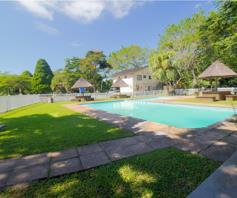While the national residential property market may be experiencing a slowdown, it is definitely "not out”.
 While the national residential property market may be experiencing a slowdown, it is definitely "not out”. This is the word from Dr Andrew Golding, CE of the Pam Golding Property group, commenting on The Study, the group’s quarterly research report which incorporates the Pam Golding Residential Property Index. He says it is important to remember that the performance of the national housing market disguises a diverse range of trends at a regional, metro and suburban level.
While the national residential property market may be experiencing a slowdown, it is definitely "not out”. This is the word from Dr Andrew Golding, CE of the Pam Golding Property group, commenting on The Study, the group’s quarterly research report which incorporates the Pam Golding Residential Property Index. He says it is important to remember that the performance of the national housing market disguises a diverse range of trends at a regional, metro and suburban level.This is the word from Dr Andrew Golding, CE of the Pam Golding Property group, commenting on The Study, the group’s quarterly research report which incorporates the Pam Golding Residential Property Index. “It is important to remember that the performance of the national housing market disguises a diverse range of trends at a regional, metro and suburban level.”
Within The Study report, Dr Golding notes that the performance of the national housing market is largely a reflection of the trends in the housing markets of the three major regions, Gauteng, KZN and the Western Cape. In these markets, the performance of the regional economy, coupled with local demographic trends, ultimately determines both the level of activity and the rate of house price inflation.
In Gauteng, for example, the regional market’s relative underperformance is at least partially attributable to weak growth in the housing markets of towns in which the mining and manufacturing sectors, both of which are currently performing poorly, are dominant.
Being home to South Africa’s largest regional housing market, accounting for some 34 percent of the total national housing stock, as well as approximately 40 percent of the country’s manufacturing, developments within the Gauteng market have a significant impact on the national performance of the housing market.
“In contrast, housing markets in and around the metro hubs of Pretoria and Sandton continue to enjoy vibrant growth, as does the burgeoning KwaZulu-Natal North Coast node and the increasingly sought-after Cape Town Metro. Growing congestion in the above-mentioned Gauteng areas, coupled with improved public transport, is allowing neighbouring suburbs which offer accessibility and affordability to also benefit from robust buyer demand.
“While in-migration and a stock shortage ensure that the Western Cape remains the top performing regional economy, an increasingly affluent middle class is also fuelling a rebound in the Eastern Cape’s metro markets.”
“All these examples highlight the importance of understanding the unique factors driving regional and metro housing markets, rather than focusing purely on the performance of the national market. And with house price inflation slowing, savvy buyers are relying on location to find growth.
“Despite cooling, the market retains resilience with ongoing demand for housing underpinning this characteristic even through sluggish economic trading conditions. For example, activity in the below R1 million price range still seems to be limited mainly by a lack of supply and not a lack of demand.”
 This two bedroom flat for sale in Moulle Point, Cape Town, is on the market for R10 million. From an elevated position, the modern apartment offers full sea-facing views and looks onto the Platinum Mile. It is selling for R10 million - click here to view.
This two bedroom flat for sale in Moulle Point, Cape Town, is on the market for R10 million. From an elevated position, the modern apartment offers full sea-facing views and looks onto the Platinum Mile. It is selling for R10 million - click here to view.The Pam Golding Properties research report says during the first half of 2015, the residential market’s total unit sales declined by eight percent while national house price inflation averaged 5.8 percent during 2015 as a whole.
In comparison and bucking the national trend, the Pam Golding Property Group concluded sales of R20 billion – recorded for the financial year from March 2015 to the end of February 2016, reflecting a meaningful increase in both units and sales turnover of 12 percent, while turnover of R2.13 billion for the month of February 2016 reflects notable growth in group turnover of 19 percent over February 2015.
The Study says while the housing markets in Gauteng’s mining and manufacturing towns experienced subdued growth last year, the markets in major metro areas, which are more reliant on the more diverse and resilient services industries, have continued to flourish.
Ongoing demand in Sandton
A prime example is Sandton, which remains the financial and commercial powerhouse of Gauteng and the national economy. Despite several years of rapid development there are still some 200 000sqm of commercial office space still at various stages of completion. As a result, demand for residential accommodation in and around the Sandton city centre continues to grow and flourish.
 This two bedroom apartment in Sandown is conveniently located in the heart of Sandton's CBD. It overlooks Nelson mandela Square and has lift access and luxurious fittings. It is on the market for R10 million - click here to view.
This two bedroom apartment in Sandown is conveniently located in the heart of Sandton's CBD. It overlooks Nelson mandela Square and has lift access and luxurious fittings. It is on the market for R10 million - click here to view.An influx of new residents into Johannesburg and Pretoria has resulted in sharp increases in house prices, which is prompting some buyers to look further afield to areas like Midrand, which is equidistant from Pretoria and Johannesburg and with an easy commute via the Gautrain, is appealing for many residential property buyers. According to Lightstone, Midrand may well become one of the most densely populated areas in South Africa within the next 30 years.
While the northern areas of Gauteng have performed well and are home to some of the highest average house prices, the strongest growth in house prices is being recorded in the more affordable sectors of the market.
According to the Pam Golding Residential Property Index, house price inflation in the lower-price segment below R1 million has been outperforming all other price categories since early-2015. This continued into early-2016, with an increase in prices in this category of 9.4 percent above year earlier levels. During 2015 as a whole, this category recorded an increase of 7 percent - compared to the national average of 5.8 percent. However, within the affordable sector - defined by Lightstone as homes valued at under R0.25 million - house prices have risen by a staggering 28.5 percent during the first 10 months of 2015 (latest available data).
Former townships outperform major metros
Another area of robust growth is in the areas formerly classified as townships. According to the FNB Former Township Index, house price inflation in these areas rose by 10.7 percent in the third quarter of last year, down from 12.3 percent in the second quarter. This is almost double the house price inflation rate recorded by the overall major metro areas during the same period. House price inflation in the former townships has now outperformed the major metros for five consecutive quarters.
 This property in Zimbali Coastal Resort & Estate, Ballito, is an architectural masterpiece nestled in lush serenity and is selling for R29.5 million. There are four en suite bedrooms, a dream designer kitchen, purpose built home theatre and much more - click here to view.
This property in Zimbali Coastal Resort & Estate, Ballito, is an architectural masterpiece nestled in lush serenity and is selling for R29.5 million. There are four en suite bedrooms, a dream designer kitchen, purpose built home theatre and much more - click here to view.Despite the robust growth in house prices in the former township areas, FNB notes that these suburbs remain the most affordable area of the housing market, with an average estimated house price of R0.3 million.
With a young population, a large portion of whom have not yet entered the housing market as potential buyers, there is still considerable potential growth in demand, which is likely to underpin the local housing market - particularly in the affordable price bands, during the years ahead.
Western Cape remains top-performing regional housing market
House prices continue to strengthen in the Western Cape. During the course of last year, house price inflation in the Cape accelerated from 8.2 percent in late-2014 to 10.4 percent in December 2015 – bringing the average for the full year to 9 percent, which is more than 3 percent above the national average. House price inflation continued to accelerate in early-2016, with prices rising by 10.6 percent above year earlier levels in January.
“Interestingly, unlike the other major provinces, in the Cape the strengthening in house prices is relatively broadly based and is not limited to the lower-price band, as is the case in both Gauteng and KZN.
“In the Cape, house prices in the middle price band (R1 million to R2 million) remained fairly resilient in 2015, accelerating into 2016 with an increase of 9.9 percent above year earlier levels in January 2016. In contrast, house price inflation in this price band is losing momentum in the other major metros, slowing to just 4.3 percent in KZN and 1.2 percent in Gauteng in January this year,” says Dr Golding.
Eastern Cape metro housing markets vibrant as middle class grows
Another regional housing market which is bucking the national trend of slowing house price inflation is the Eastern Cape. Looking at the overall regional performance, the Eastern Cape is showing signs of a slight slowdown - with total regional unit sales during the first half of the year declining by 12.6 percent from year earlier levels (latest available data). However, sales within the region’s two largest metros - Port Elizabeth and East London - remained relatively resilient last year.
 This four bedroom home in Summerstrand, Port Elizabeth, is classic and elegant and has been fully restored to blend heritage features of wood and solid stone into the beautiful modern living spaces. It is priced at R9.9 million - click here to view.
This four bedroom home in Summerstrand, Port Elizabeth, is classic and elegant and has been fully restored to blend heritage features of wood and solid stone into the beautiful modern living spaces. It is priced at R9.9 million - click here to view.“It is thus the resilient metro markets which appear to be driving the rebound in the regional housing market. House price inflation in Port Elizabeth accelerated to 7.4 percent in the final quarter of last year (according to Absa), while in East London house prices were 15.2 percent above year earlier levels during the same quarter,” says Dr Golding.
“Housing demand in these metros has been fuelled by an influx of people from surrounding rural areas. However, analysts believe that strong housing demand in the major metros is primarily due to the growing middle class in the region. The burgeoning middle class in the area is at least partially attributable to increased employment in the public sector. In recent years, public sector workers’ remuneration has increased more rapidly than inflation, resulting in substantial increases in real income.”
In addition to an increasingly affluent middle class, increases in house prices in the region have, until recently, lagged behind the national average - rising by just 2.5 percent to 3.5 percent each year. With growth in house prices lagging behind increases in income, housing affordability has improved - making the Eastern Cape property market more accessible to a larger portion of the regional population.
There has also been a significant increase in the number of property purchases by black buyers. Agents in East London estimate that black property buyers accounted for between 60 percent and 80 percent of total sales last year.
The impact of new entrants into these metro markets is evident in Port Elizabeth, which has experienced particularly strong levels of activity among first-time buyers. These buyers have been most active in the lower-price band below R1 million. According to Lightstone data, approximately 56 percent of all sales in Port Elizabeth last year were priced at R0.8 million or less.
In East London, housing activity over the past year has been slightly less concentrated in the under R0.8 million market with just 45.6 percent of the past year’s sales in this price band. As a result, East London’s housing market price profile is slightly more skewed towards the higher priced end of the market.
As a result of strong growth in demand, house price inflation in the Eastern Cape accelerated throughout 2015, rising from a level of just 3.7 percent in mid-2014 to 8.4 percent above year-earlier levels in October 2015 (latest available data) - narrowing the gap with the top-performing Western Cape housing market to just 1.4% that month.
North Coast housing markets bolster KZN’s regional performance
Although house price inflation in KZN as a region is losing momentum, it is slowing from a relatively high base and continues to marginally outperform the national average. House price inflation in the province averaged 6.5 percent last year - exceeding both Gauteng (5.1 percent) and the overall South African housing market (5.8 percent).
Among the major metro areas, Durban is experiencing the slowest growth in house price inflation - rising by just 5.4 percent in October. Unlike South Africa’s other major provinces, the housing market in KZN is not being driven by strong growth in the major metro region. Instead, it is growth nodes along the north coast - including Durban North and beyond - which are behind the still high levels of housing market activity in the region.
For more information on The Study, click here.








